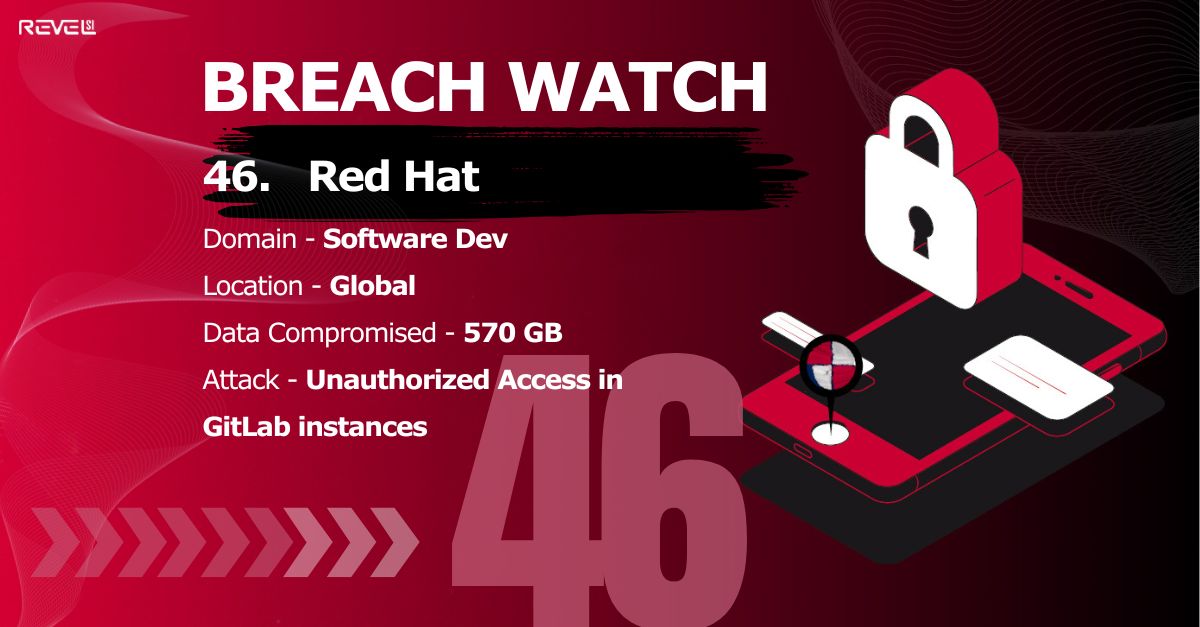Red Hat Data Breach

Update – October 2025: ShinyHunters Joins the Extortion Attempt
The Red Hat data breach has entered a new phase. ShinyHunters has now joined the group originally claiming responsibility for the breach—Crimson Collective—in an apparent attempt to extort Red Hat.
ShinyHunters, a group known for previous high-profile data leaks and ransom operations, claims to possess the same data taken from Red Hat’s internal GitLab consulting environment. The attackers have reportedly demanded payment to prevent public release of the stolen materials.
Red Hat reiterated that its product infrastructure, customer systems, and software supply chain remain unaffected, emphasizing that the compromised environment was isolated from production networks. The company continues to work with law enforcement and cybersecurity partners to contain the situation and verify the extent of exposure.
This escalation highlights how quickly a contained technical incident can evolve into a multi-actor extortion campaign, amplifying reputational risk even when operational systems remain secure. It’s another reminder that incident response today must include not only remediation but also communication, coordination, and resilience planning for post-breach fallout.
Overview
In early October 2025, Red Hat, one of the most trusted names in open-source software and enterprise Linux, confirmed that it had experienced a data breach. The company revealed that attackers gained unauthorized access to one of its internal GitLab servers used by its Consulting division.
While Red Hat says its core products and software supply chain were not impacted, the breach has raised concerns because the compromised system stored internal consulting documents—materials that could include sensitive information about clients’ infrastructure and configurations.
The incident comes amid a steady rise in attacks that target technology providers and software supply chains, using trusted partners as a path into larger organizations.
How It Happened
According to Red Hat’s statements, the breach affected a self-hosted GitLab instance used by the consulting team. This environment is separate from Red Hat’s production systems and software distribution network.
In late September, Red Hat’s security team detected suspicious activity and launched an investigation. The company confirmed that an unauthorized third party copied data from this GitLab server before access was blocked.
Shortly after, a hacking group calling itself “Crimson Collective” claimed responsibility. In underground forum posts, the group said it exfiltrated about 570 GB of compressed data, allegedly including tens of thousands of internal repositories and Customer Engagement Reports (CERs) and project materials.
These kinds of documents can contain details such as network diagrams, system configurations, software architecture, and occasionally temporary credentials or access tokens used during consulting projects.
Red Hat emphasized that these consulting repositories are isolated from its main infrastructure, meaning products like Red Hat Enterprise Linux or OpenShift were not compromised. The GitLab instance was taken offline, remediation began, and potentially affected customers started receiving notifications.
Risks
Even if Red Hat’s core software systems remain safe, this incident still carries important risks.
Sensitive customer details: Consulting documents can reveal how a client’s systems are built and connected. If attackers obtained configuration files or network layouts, they could use that knowledge for targeted attacks against those clients.
Reputation: Red Hat is strongly associated with security, reliability, and transparency. Any breach can shake user and customer confidence, even if the impact is limited.
Supply chain exposure: Attackers increasingly use vendors and consultants as a backdoor into larger organizations. Knowing the tools, processes, or authentication methods used in customer environments can make later intrusions easier.
Uncertainty: Investigations take time. Cybercriminals sometimes exaggerate, but even partial exposure of client data can have lasting effects.
Recommendations
For organizations that have worked with Red Hat Consulting or rely on its services, consider the following practical steps:
- Review engagement history: If you partnered with Red Hat Consulting recently, ask whether your project data could be involved.
- Rotate shared credentials: Reset any tokens, API keys, or passwords used during the consulting engagement.
- Increase monitoring: Watch for unusual network or login activity, especially around systems configured during Red Hat-supported projects.
- Revisit data-sharing practices: Limit the sharing of sensitive details in future collaborations and keep critical data in your controlled environment.
- Follow official updates: Track Red Hat’s security blog and communications for investigation outcomes and guidance.
Closing Thoughts
The Red Hat breach is a reminder that even security-minded organizations can be targeted. In a deeply connected world, every partner, consultant, and tool introduces new exposure. Red Hat appears to have responded quickly and transparently, but the incident underscores the need for continuous vigilance—from vendors and from every organization that relies on them.
Trust in technology is built on openness and accountability. Red Hat’s next challenge is proving that its commitment to those principles remains as strong as ever.
